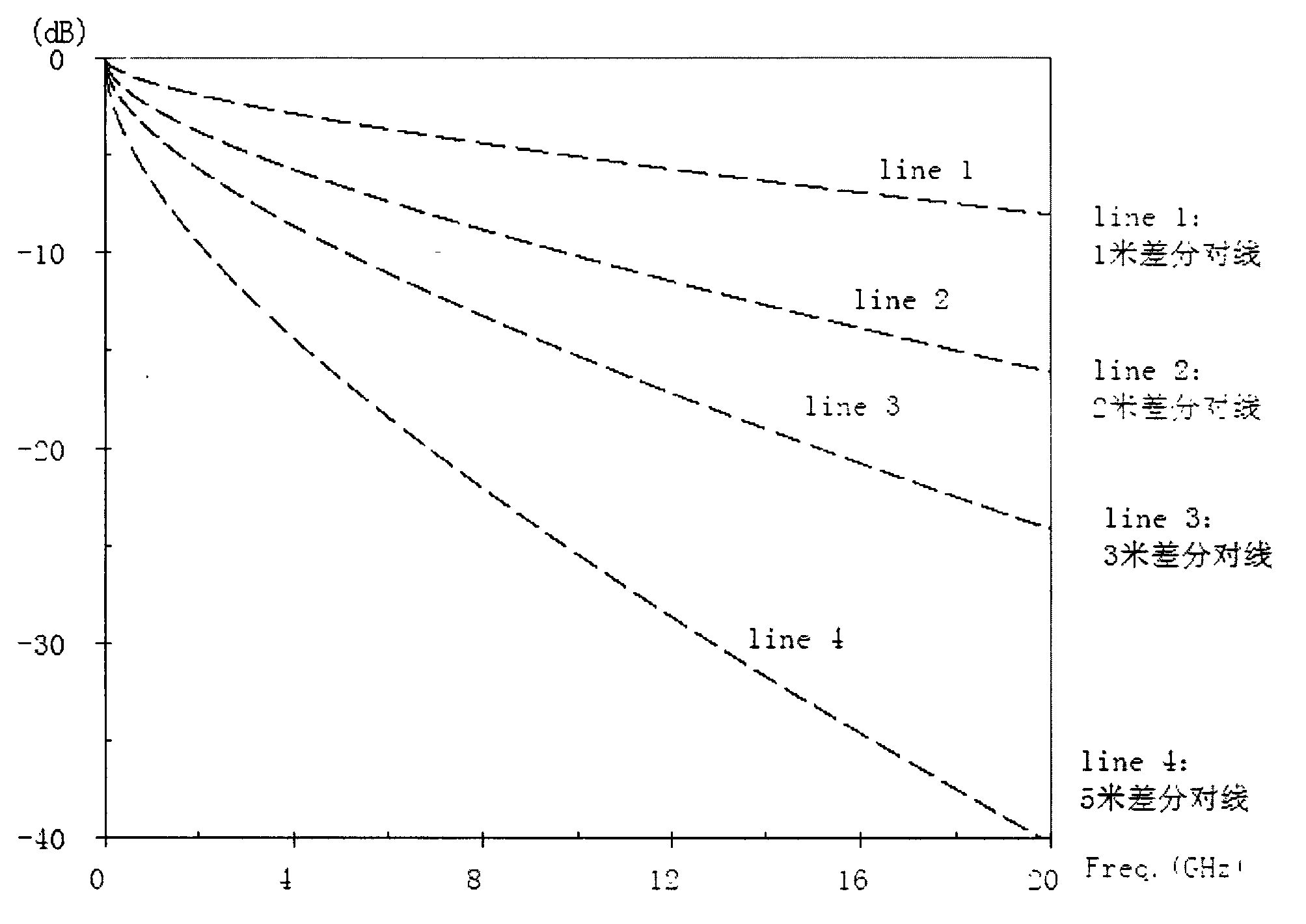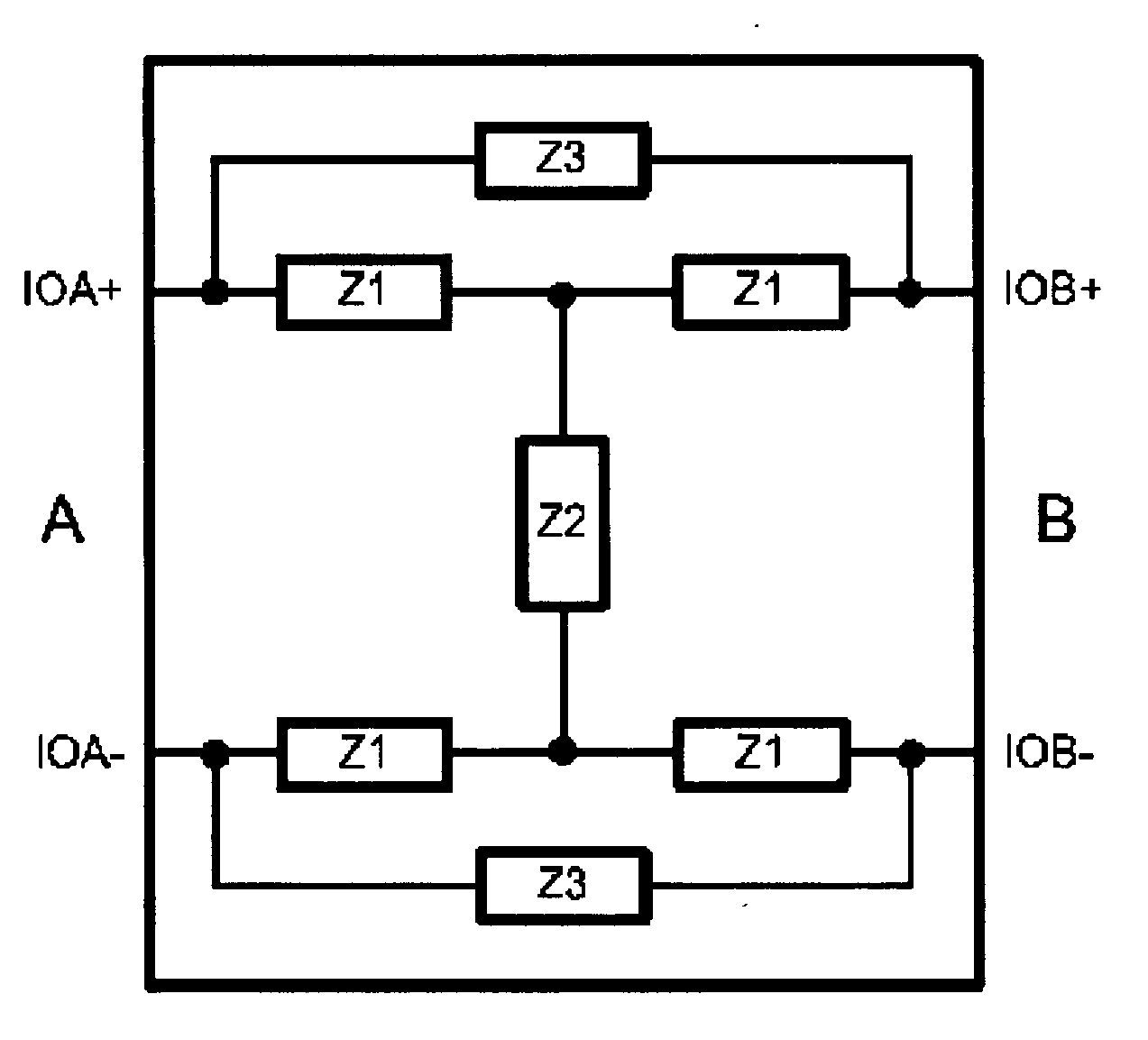Low-cost balancing signal passive element
A technology of passive components and balanced signals, which is applied in the direction of electrical components, impedance networks, multi-terminal pair networks, etc., can solve the problems of signal asymmetry of positive and negative signal lines, large installation space, high cost, etc., and achieve strong promotion effect and economic benefits. Small signal distortion, simple effect
- Summary
- Abstract
- Description
- Claims
- Application Information
AI Technical Summary
Problems solved by technology
Method used
Image
Examples
Embodiment 1
[0026] Embodiment 1. Connect the two ends of the passive element composed of a resistance of 40Ω and an inductance of 1.0nH in series with two signal lines of a 1-meter-long differential pair line respectively, that is, the passive element is bridged to the differential pair line, and the signal passes through this The change in frequency response for differential pairs is as follows: Figure 4 Shown in line 1. When the signal frequency is 0Hz, the signal attenuation is -6.9dB; when the signal frequency is 10GHz, the signal attenuation is -7.6dB; when the signal frequency is 20GHz, the signal attenuation is -8.8dB. The experimental results show that when the signal frequency is between 0Hz and 20GHz, if a passive component composed of a 40Ω resistor and a 1.0nH inductance is bridged on the two signal lines of a 1-meter-long differential pair, the differential The signal on the line can maintain a relatively stable attenuation trend.
Embodiment 2
[0027] Embodiment 2. Connect the two ends of the passive element composed of a resistance of 20Ω and an inductance of 1.0nH in series with two signal lines of a 2-meter-long differential pair line respectively, that is, bridge the passive element on the differential pair line, and the signal passes through this The change in frequency response for differential pairs is as follows: Figure 4 Shown in line 2. When the signal frequency is 0Hz, the signal attenuation is -10.8dB; when the signal frequency is 5.2GHz, the signal attenuation is -11.6dB; when the signal frequency is 14GHz, the signal attenuation is -13.8dB. The experimental results show that when the signal frequency is between 0Hz and 14GHz, if a passive component composed of a 20Ω resistor and a 1.0nH inductance is connected in series on the two signal lines of a 2-meter-long differential pair, the differential The signal on the line can also maintain a relatively stable attenuation trend.
Embodiment 3
[0028] Embodiment 3. Connect the two ends of the passive element composed of a resistance of 30Ω and an inductance of 5.0nH in series with two signal lines of a 3-meter-long differential pair line respectively, that is, bridge the passive element on the differential pair line, and the signal passes through this The change in frequency response for differential pairs is as follows: Figure 4 Shown in line 3. When the signal frequency is 0Hz, the signal attenuation is -8.6dB; when the signal frequency is 1.9GHz, the signal attenuation is -8.7dB; when the signal frequency is 6GHz, the signal attenuation is -11.5dB. The experimental results show that when the signal frequency is between 0Hz and 6GHz, if a passive component composed of a 30Ω resistor and a 5.0nH inductance is connected in series on the two signal lines of a 3-meter-long differential pair, the differential The signal on the line can also maintain a relatively stable attenuation trend.
[0029] see Figure 5 , the...
PUM
 Login to View More
Login to View More Abstract
Description
Claims
Application Information
 Login to View More
Login to View More - R&D
- Intellectual Property
- Life Sciences
- Materials
- Tech Scout
- Unparalleled Data Quality
- Higher Quality Content
- 60% Fewer Hallucinations
Browse by: Latest US Patents, China's latest patents, Technical Efficacy Thesaurus, Application Domain, Technology Topic, Popular Technical Reports.
© 2025 PatSnap. All rights reserved.Legal|Privacy policy|Modern Slavery Act Transparency Statement|Sitemap|About US| Contact US: help@patsnap.com



